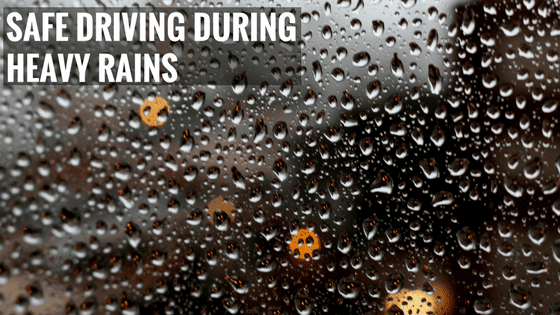According to a 10-year study average by the Federal Highway Administration, approximately 22% (nearly 1,259,000) of crashes were weather-related. More specifically, of that 22%, 73% of those crashes were caused because of wet pavement and 46% was due to rain. With numbers like that, clearly, driving in the rain can be very dangerous. To avoid the potential dangers, here are 5 tips for safe driving during heavy rains:
Check the Weather
Before setting out for a long day of driving, it’s best to be prepared and know what you can expect from the weather ahead of time for the route you will be driving. It is also a good idea to follow up throughout the day by either tuning into a radio station that gives weather updates or checking a weather app during a stop or break.
Caution During the First Minutes of Rainfall
Practice extra caution during the first few minutes of rainfall. When the roads go from being bone dry to wet, the buildup of dried oil and grease can make the roadway extra slippery when the rain begins to fall. Be careful and give the rain some time to wash away or diluted the oil and grease buildup.
Slow Down
Because rain reduces visibility, road traction, adversely affects vehicle performance, inhibits driver capabilities and behavior, it’s important to SLOW DOWN. Other drivers during heavy rains are unpredictable and can suddenly break react to the elements; be sure that you are giving yourself enough space and time to react yourself.
Lighter Loads Beware
If you are pulling a light or empty load, you are at higher risk of tipping or rolling over during a storm. The lighter load reduces your traction with the road and all it takes is a sudden gust of the wind to hit your trailer just right and turn you over.
Hydroplaning Risk
Just because you are in a big heavy rig doesn’t mean you are void from hydroplaning. Hitting a deep enough puddle at a high speed can inhibit your tires ability to perform, leading you to lose control and hydroplane. It’s best to avoid the edges of each lane because they tend to pool more puddles than the middle of the lanes. Additionally, keeping up with proper tire maintenance (regularly checked for wear and tire and inflated appropriately) will help to reduce the risk of hydroplaning.
Yes, we all have places to go and deliveries to make, but when driving during heavy rains, it is best to err on the side of caution. Slow down and be aware of the cautions on the road. If the rain becomes too heavy that vision is completely impaired, pull over and wait it out until the rain lightens. Your safety comes first.

